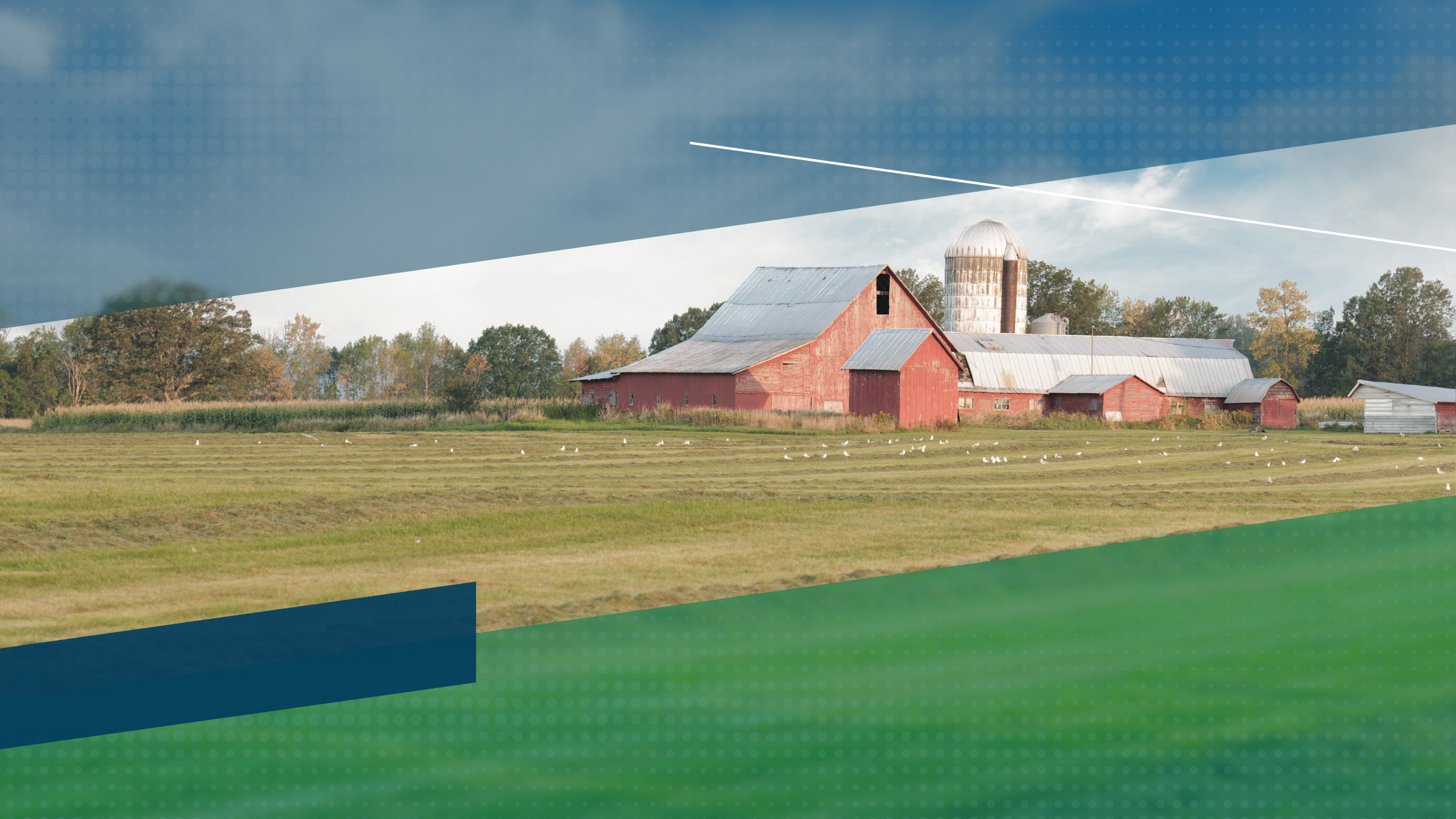Agricultural credit conditions were somewhat mixed in the third quarter, according to the Minneapolis Fed’s third-quarter agricultural credit conditions survey. The negative effects of drought were offset by the strong cattle prices, as about even numbers of respondents reported lower and higher agricultural income. The majority of respondents indicated no change in rates of loan repayments and renewals, and extensions. Lenders reported an optimistic outlook for fourth-quarter performance, as overall farm income and capital spending were expected to increase.
Farm income, farm household spending and capital investment
A little less than half the survey respondents reported no change in farm income in the third quarter; 25 percent noted an increase and 28 percent a decrease. Bankers in Minnesota and Montana saw a marked decrease in farm income. According to one Minnesota banker, there has been a “significant decrease in yields from last year. Prices will not offset reduction in yields for farm income.” However, North Dakota and South Dakota bankers reported significant increases in farm income, 38 percent and 53 percent, respectively. Bankers from each state credit livestock prices for the increased income but still expressed concern over the continuing drought. Said one South Dakota banker: “Cattle prices are high and grain prices not too bad, but some areas suffered drought.”
Overall household spending remained stable in the third quarter, as 70
percent of lenders reported no change. The remaining responses were fairly
evenly split; 13 percent indicated an increase and 17 percent a decrease
in spending. Each of the states was fairly consistent with the overall
findings, except Wisconsin, where 44 percent of the respondents reported
lowered household spending.
Capital spending decreased, as 31 percent of lenders reported lower spending
levels; only 4 percent noted higher levels; and 65 percent saw no change
during the third quarter. “Spending on capital is down due to uncertainty
with crop yields,” commented a Minnesota banker. Wisconsin respondents
noted the highest decrease, with 67 percent reporting lowered capital
spending.
Loan repayments and renewals
Overall, the rate of loan repayments was stable over the third quarter, with 70 percent of lenders reporting no change, and the remaining responses were split between increases and decreases. Lenders from Montana and South Dakota saw the biggest increases, with 38 and 21 percent, respectively, reporting higher rates. A South Dakota lender attributes this increase to disaster payments received by farmers: “We have seen good repayment patterns from these sources of funds and expect that to continue through harvest.” Wisconsin and Minnesota experienced the greatest decreases in the rate of loan repayments. One-third of Wisconsin and 17 percent of Minnesota respondents reported lower repayment rates. Most reported no significant problem in collecting repayments from their agricultural customers. Demand for loan renewals or extensions remained fairly stable, as 70 percent of lenders indicated no change. Respondents reporting higher demand for renewals or extensions decreased to 19 percent, while those noting lower demand increased to 10 percent.
Demand for loans, required collateral and interest rates
The demand for loans stabilized during the quarter, with 65 percent of lenders reporting no change. The remaining responses were evenly split between higher and lower demand. Collateral requirements showed no sign of a decrease, with zero respondents reporting lower requirements; 87 percent no change; and 13 percent, increased requirements. Availability of funds remained constant, with an extremely low percentage of lenders reporting a decrease in availability. Average interest rates on fixed loans remained constant. However, average rates on variable grew by an average of three-quarters of one percent.
Land values
Overall land prices are still increasing, with district farmland prices experiencing an average of a 13 percent increase from last year and a 3 percent increase from last quarter. Ranchlands realized an average of a 16 percent increase from last year and a 3 percent increase from last quarter. While 25 percent of respondents reported increased farmland sales, only 15 percent saw fewer sales this year. According to a South Dakota banker, “Agricultural real estate continues to inflate primarily due to low long-term interest rates and the insatiable demand from operators wanting to expand, and the hunting-recreation factors.” A North Dakota banker also commented on increased land values: “We have seen an increase in land market value only because of outside nonfarmer investors’ mostly from outside the N.D. area!” Survey respondents reported about one-third of farmland sales are sold to nonfarmers. Note of caution: Real estate prices can vary significantly, not only from state to state or county to county, but even within a county.
Outlook
Lenders were optimistic going into the final quarter of 2003. Overall
agricultural income, capital spending and household purchases were expected
to rise. However, decreases in income and capital spending were expected
in Minnesota and Wisconsin. Meanwhile, increases in demand for loans and
the rate of loan repayment was anticipated during the fourth quarter.






